This article highlights Arrazola, a small town located in the Central Valleys of Oaxaca.
I know. There is little fun in using an unknown word like “alebrije” in the title of a post. Well, maybe the word intrigued you enough to check out the post.
One way or another, the word has some magic behind it. The term comes from a dream. Yes, you read right. A young artist gave birth to the word based on a dream (some say hallucination) he had while battling a high fever.
Pedro Linares, a figurine maker born in Mexico City, became very ill when he was 30 years old. While lying in his bed, he had a dream where rocks and clouds turned into wildly colored creatures. The creatures were like nothing he had seen on earth. They had wings, horns, long tongues, tails, and sharp teeth. Many of them were chanting the word “alebrije.”
When Linares got well, he recreated the creatures of his dream with cardboard and paper mache. He painted them with intricate and vivid patterns. His creations gained a lot of notoriety during his lifetime.
This craft was later adapted by Oaxacan artisans. Manuel Jimenez, a woodcarver who in the ’80s toured the US with Linares, adapted the alebrijes to the abilities of people of his state.
He started to add the colors and patterns of the original alebrijes to carvings made with a local wood called copal. Nowadays, many families in Jimenez’s native Arrazola, and other towns such as San Martin Tilcajete and La Union Tejalapan, make a living selling the figures.
I visited an alebrijes workshop in the town of Arrazola (located in one of the Oaxacan central valleys). There, the entire process to obtain a final figure was explained.
Everything starts with carving a figure from a fresh piece of copal wood. Instruments like machetes, chisels, and knives are used. The copal trees which used to grow around the craft towns have disappeared. The short supply of copal had forced some carvers to use other wood like cedar.
After the carving, the piece is left to dry (this can take up to 10 months).
During the drying period, the wood can crack. Little pieces of copal and resins are added to the cracks before the painting starts. The wood is sanded too to even the surface.
The painting is done by hand. Tradition dictates that paint made from natural materials (lime juice, pomegranate seeds, flowers, indigo, etc) should be used. However, most artists are using acrylic-based paints nowadays. The painting is done in two layers: an undercoat and then a multicolored design over it.
There are pieces with varying degrees of quality. The design in the low to medium quality pieces is very simple. These types of pieces are good enough for many visitors.
High-quality pieces have intricate designs resembling hair, scales, or feathers. The difference is very palpable. The carving on the high-quality pieces is superior as well. Some of these pieces can sell for thousands of dollars.
I wasn’t able to visit the other towns famous for their alebrijes. I hope I can visit one day and discover the differences (if there are any).
The town of Arrazola is located about 4 miles from Oaxaca City. The town is usually visited as part of a full-day excursion to Monte Alban and other artisan towns in the area. I recommend joining a tour since they are affordable and guides provide excellent information.
A reputable company will not simply take guests to Arrazola for a shopping spree. They will take visitors to a well-established workshop. Once there, they will explain the history behind the craft and the process used to create each piece. Of course, there will be pieces for sale (each person decides if he or she wants to buy).
Did you know about the Oaxacan alebrijes? Let me know in the comments section below.
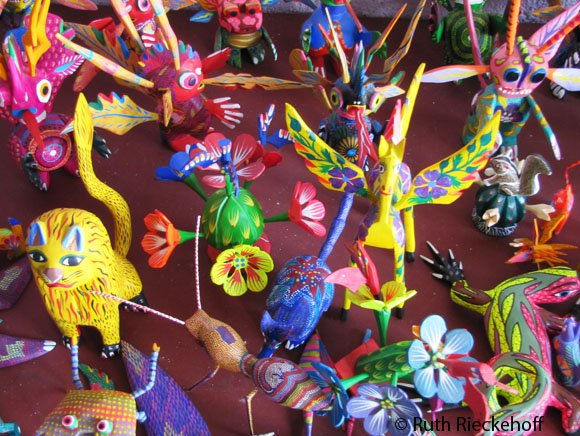
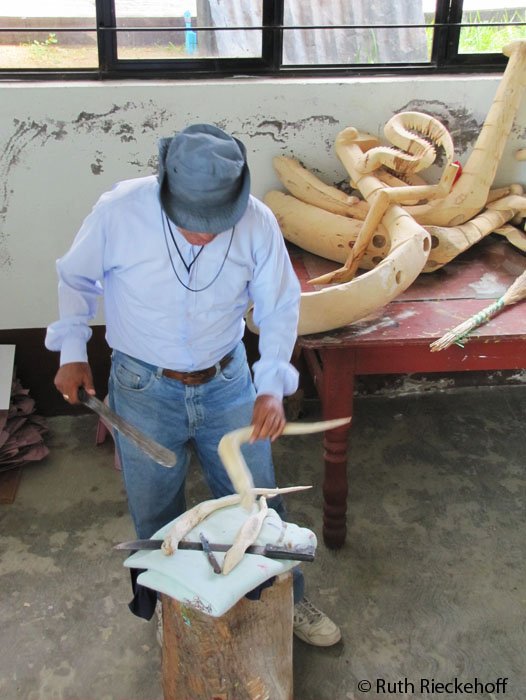
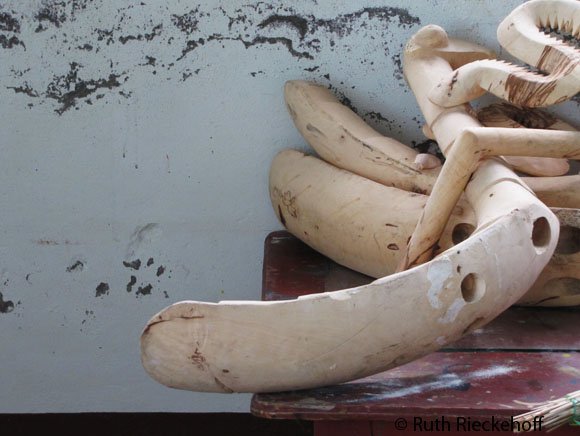



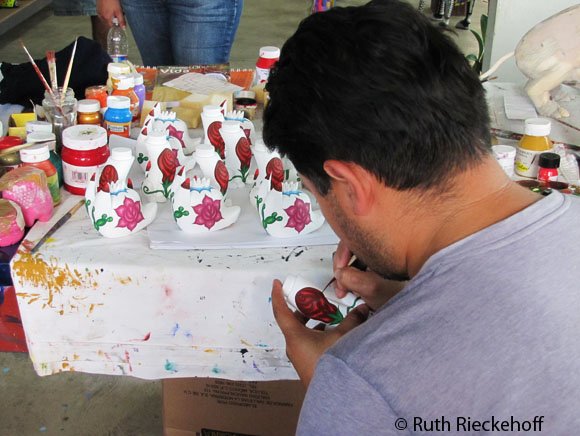
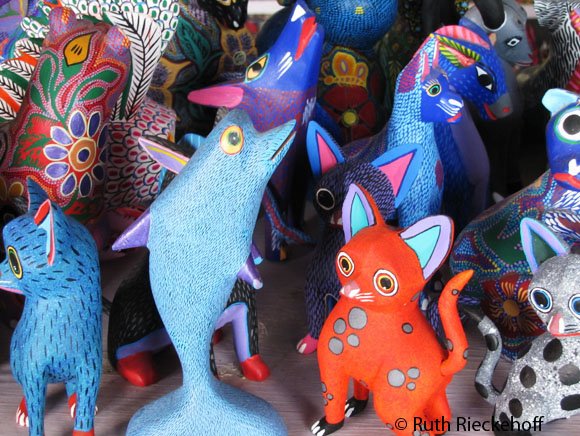
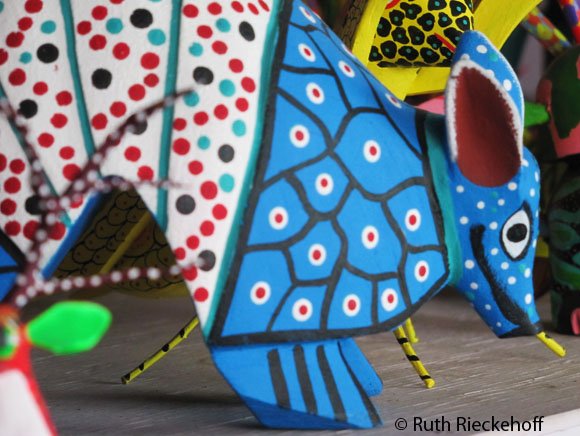

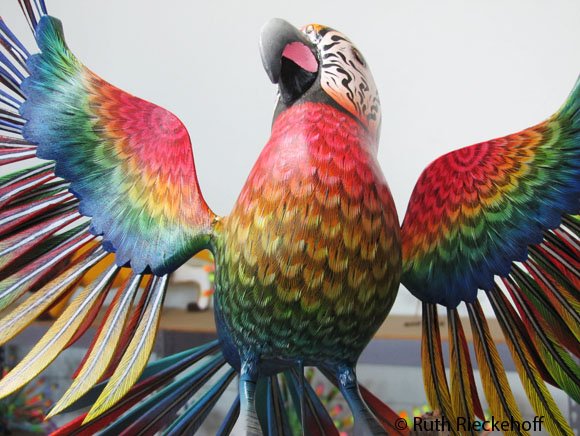
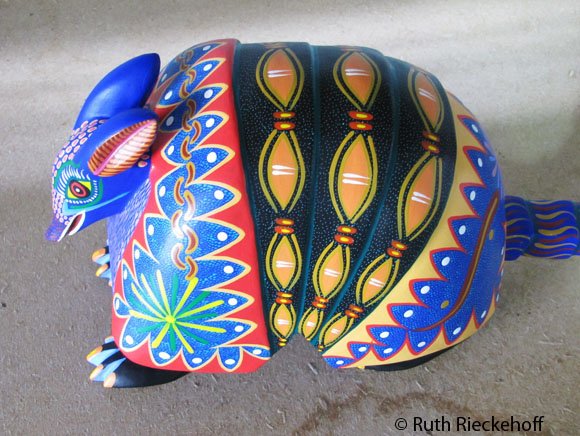
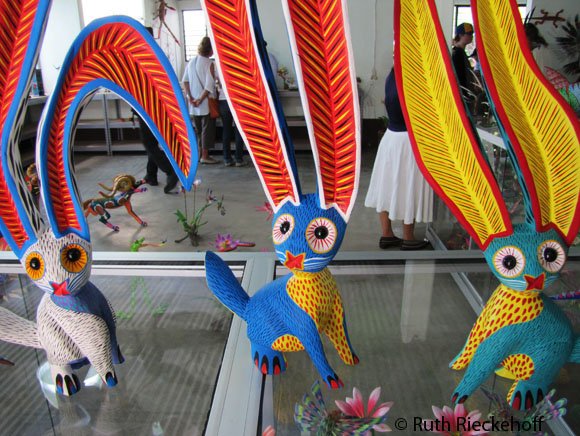




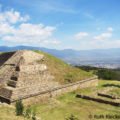
Lane says
It must take weeks just to paint one of those. What craftsmanship!
Andrew says
The handicraft items are really beautiful! Wish you a very colorful and happy new year :-)) How is life going on? I really appreciate that you support the artisans of handicrafts! 🙂 I also promote the artisans of handicraft items in my locality.
Andrew says
This is creative handicraft item. It’s look colorful and really appreciated. I will promote this kind of handicraft.
debbie says
It would take a lot of incredible skill to make those. The peacock and rabbits are especially stunning!
Patrick says
These are truly works of art, but I was more interested in the carving demonstration where a machete made an appearance. Who knew it can be used to do something really intricate.